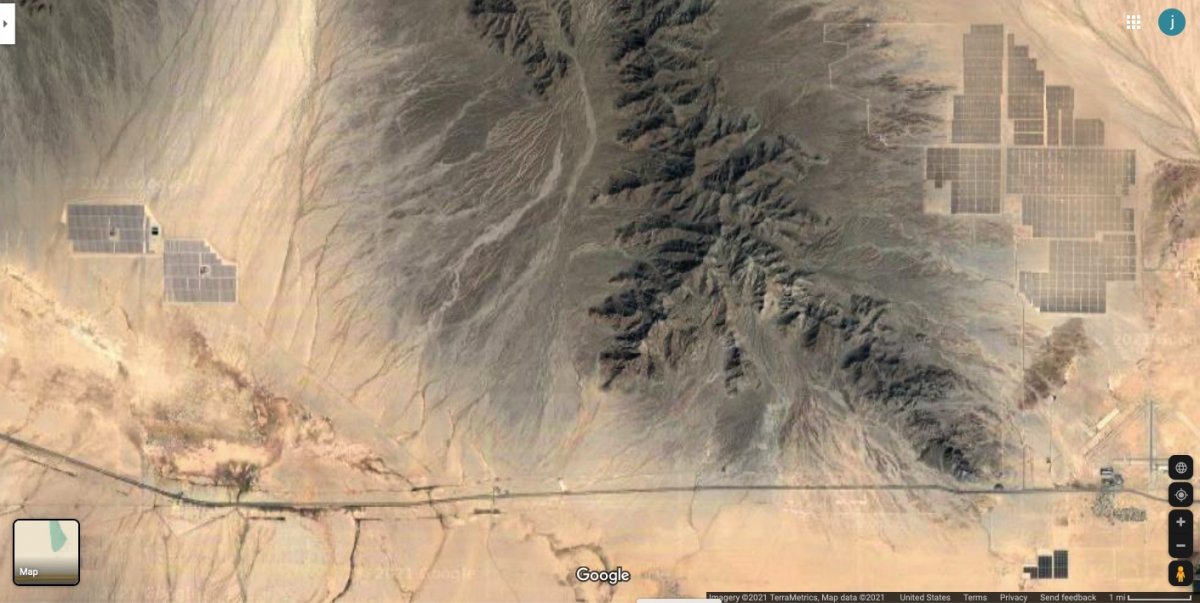Save the Planet & Spare the Desert
What does turning off the lights when you leave the room, have to do with preserving wild spaces? Everything. Here’s why.

Large scale solar projects on pristine public land as seen from space. Sited on formerly “limited use” land, these abut the Mc Coy Wilderness. On the left is 3 sq mi of solar thermal, and on the right about 7 sq mi at full buildout, see the shadowy fence line, of solar PV. There are over 25,000 acres of BLM projects (the size of San Francisco), and and another 10,000 acres in the BLM permit pipeline. Without aggressive Distributed Energy Resources, the forecast need is for half a million acres converted to large scale solar (nearly 800 square miles) by 2045.
Joan Taylor has been a Sierra Club activist for five decades and is currently Chair of the California/Nevada Desert Energy Committee, among other Club positions.



Add new comment